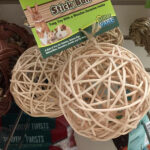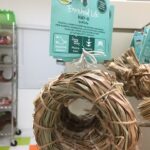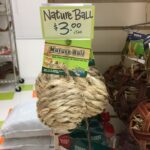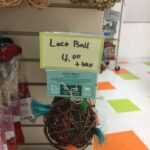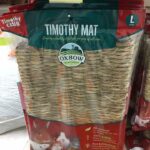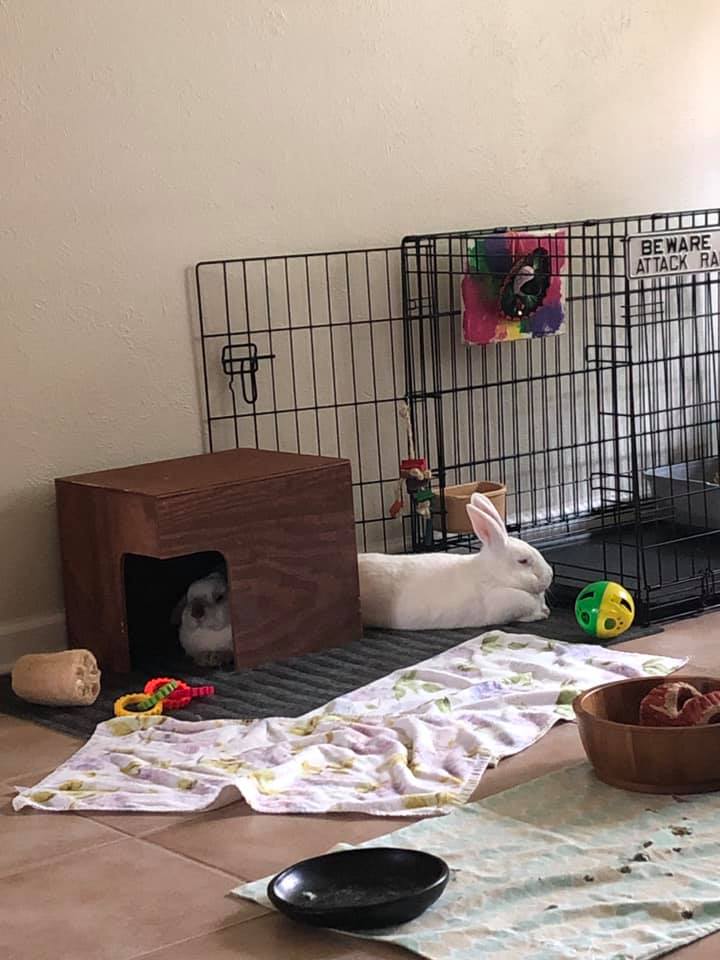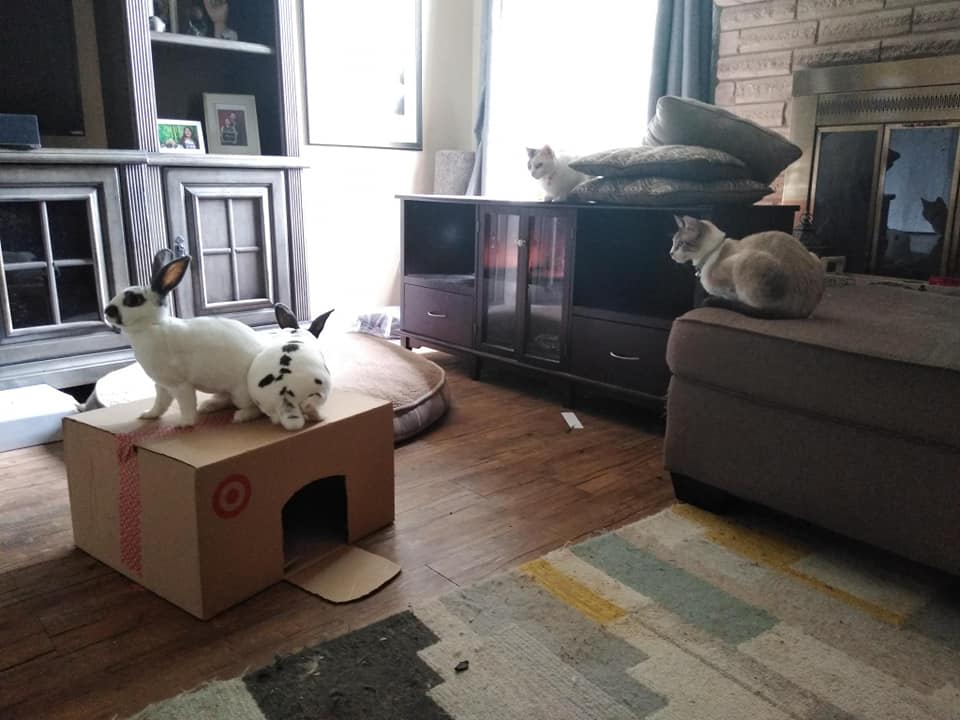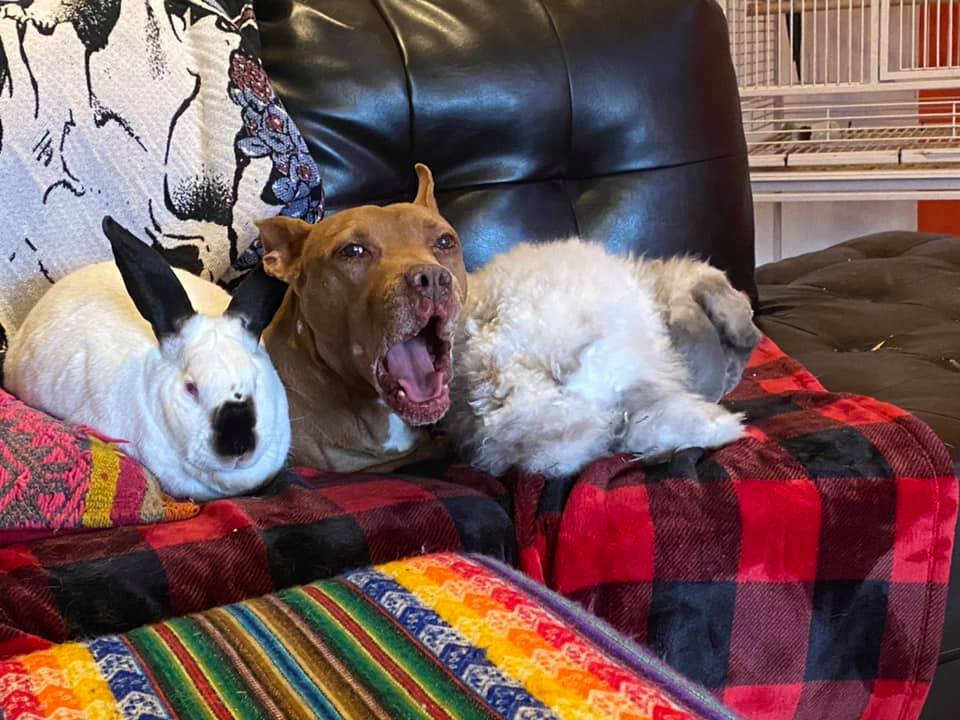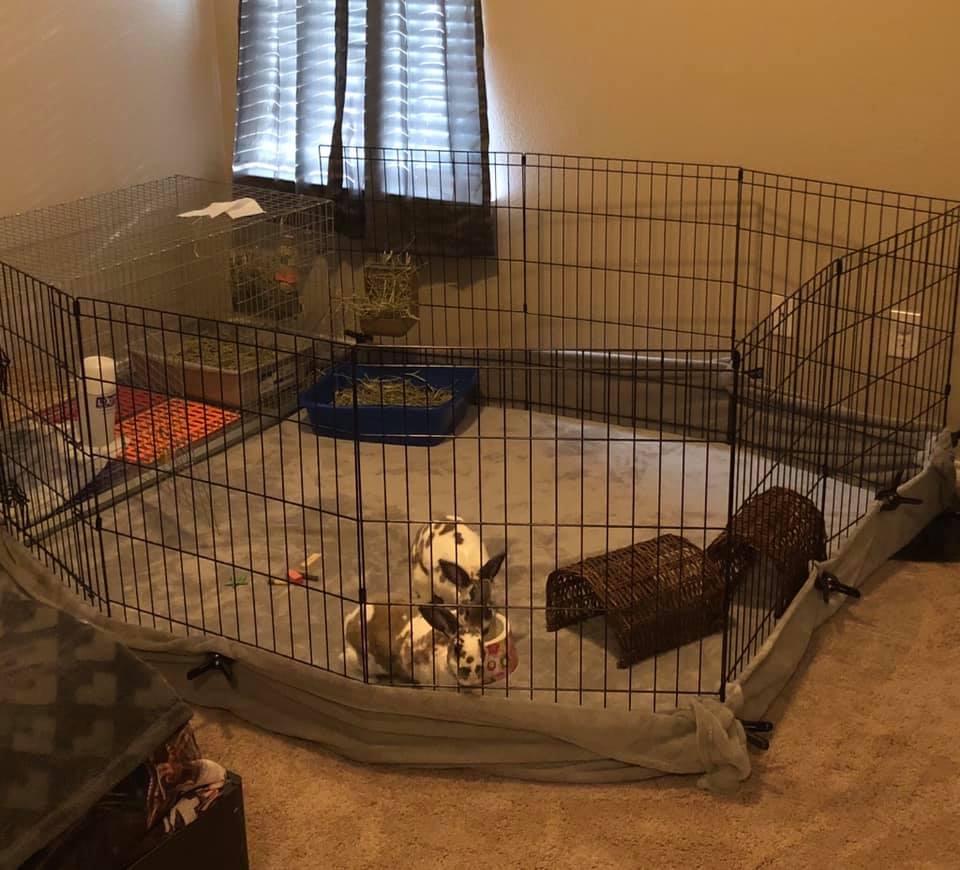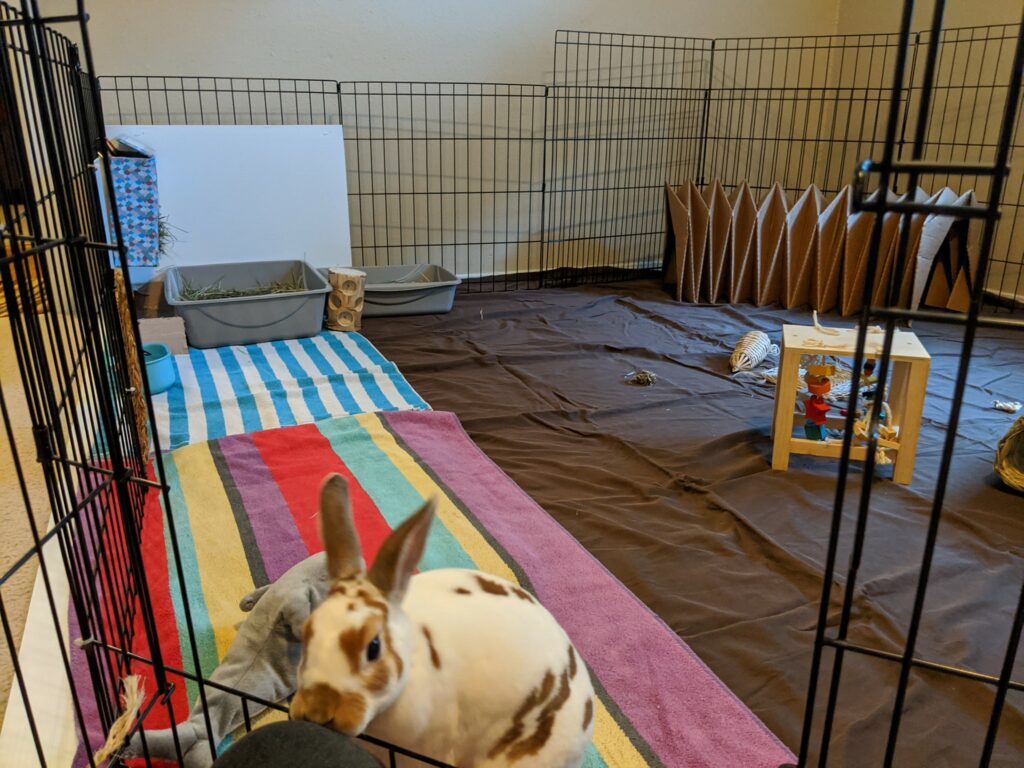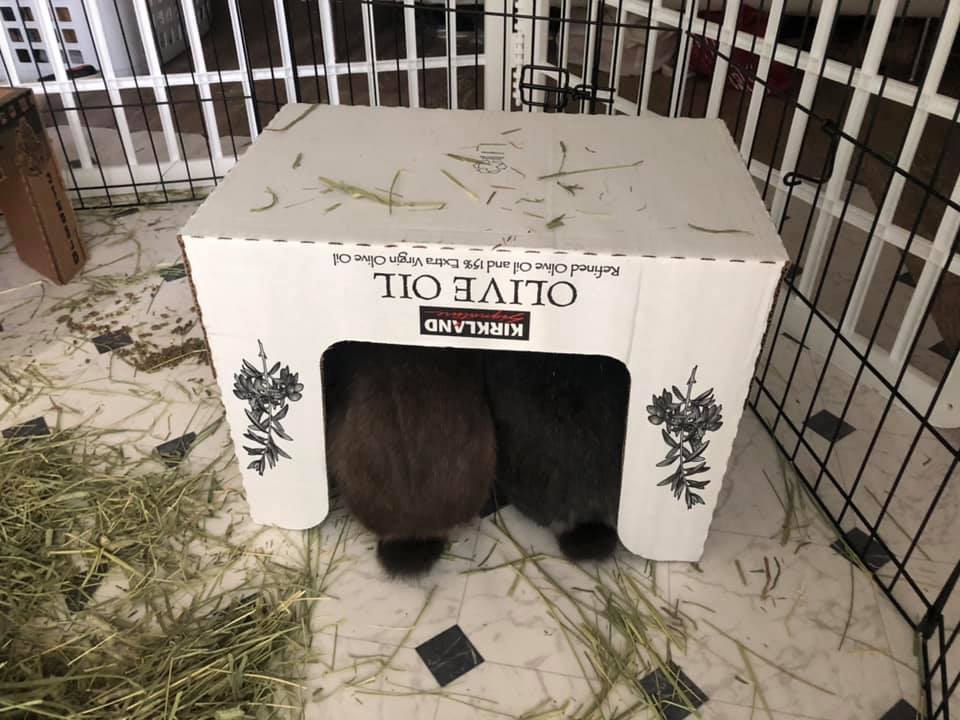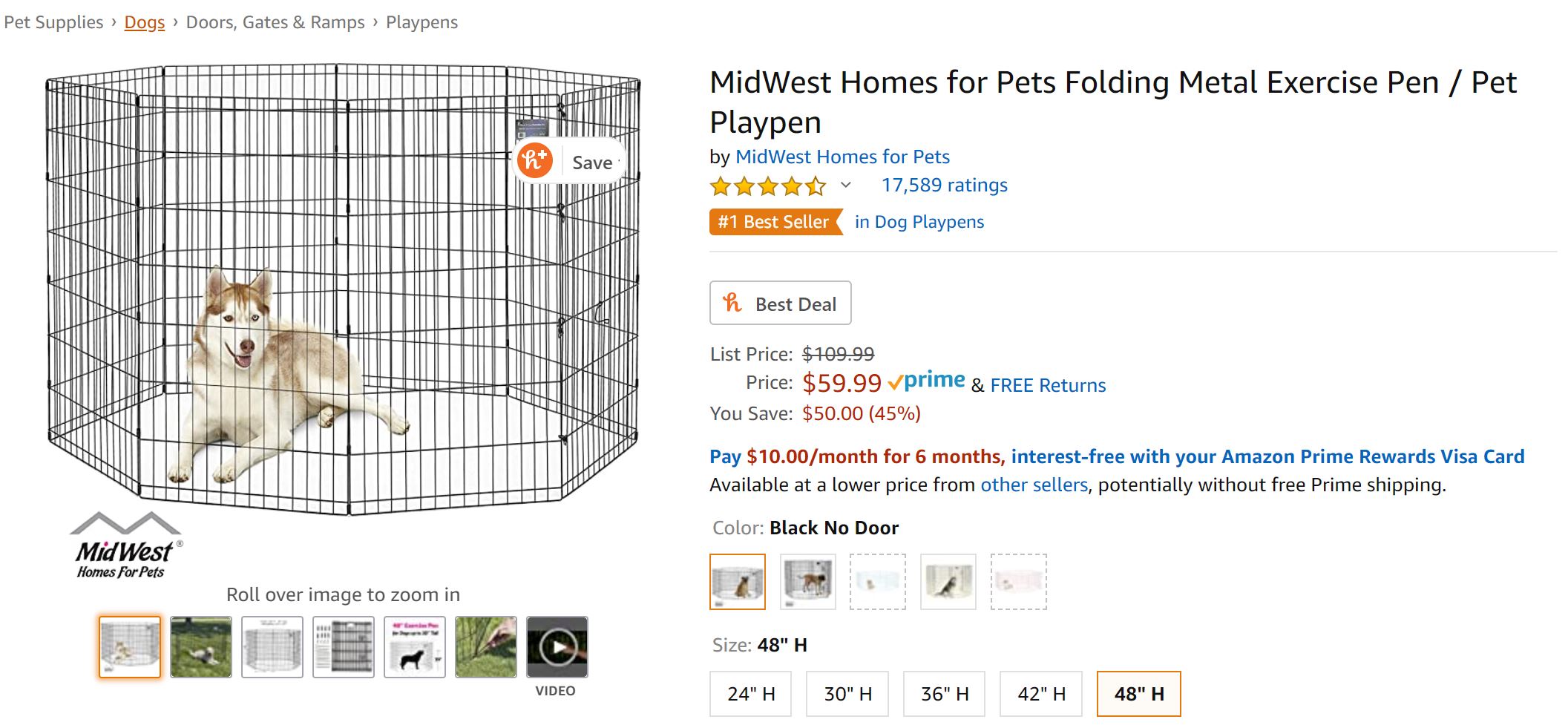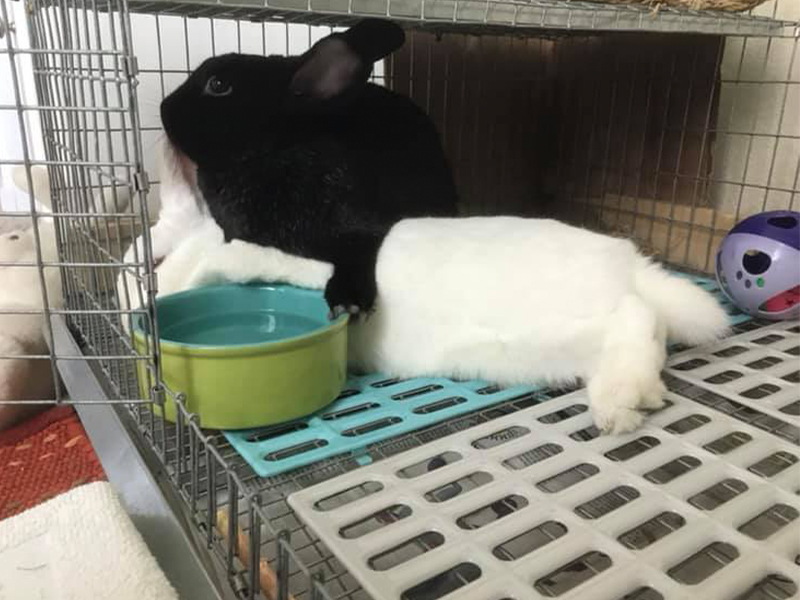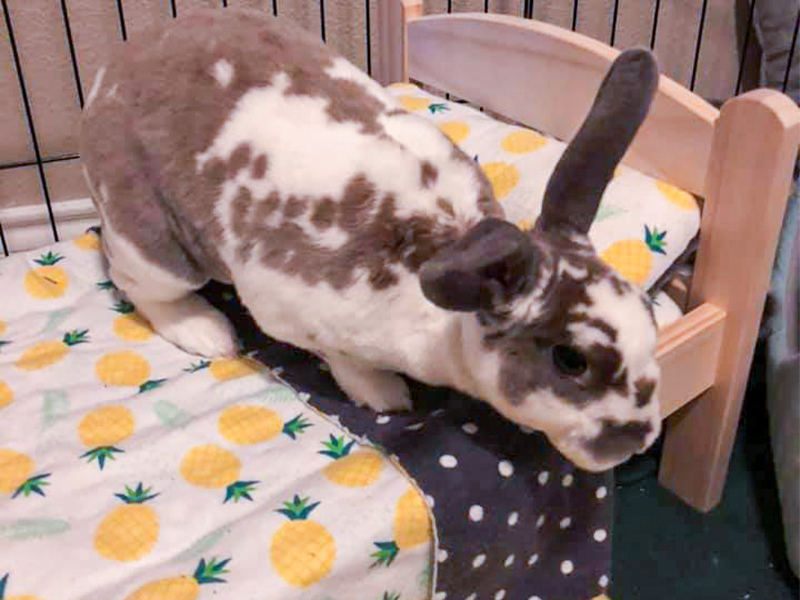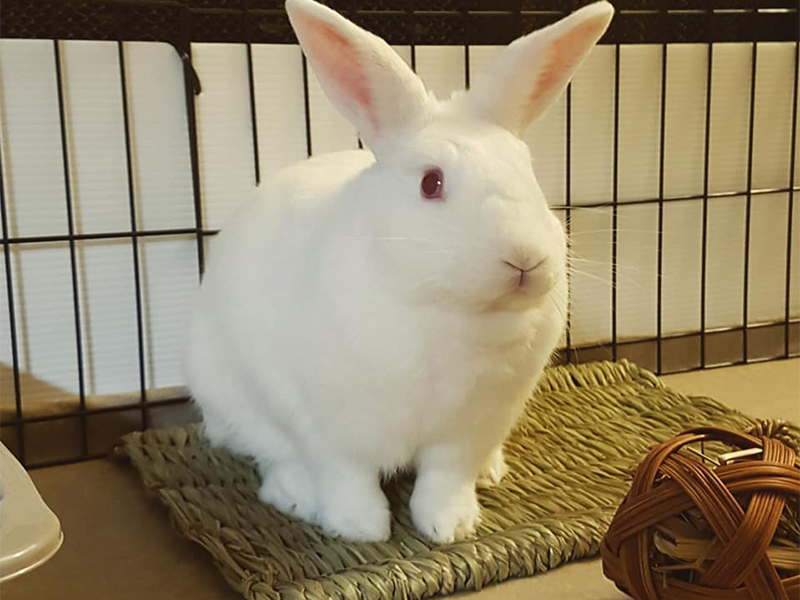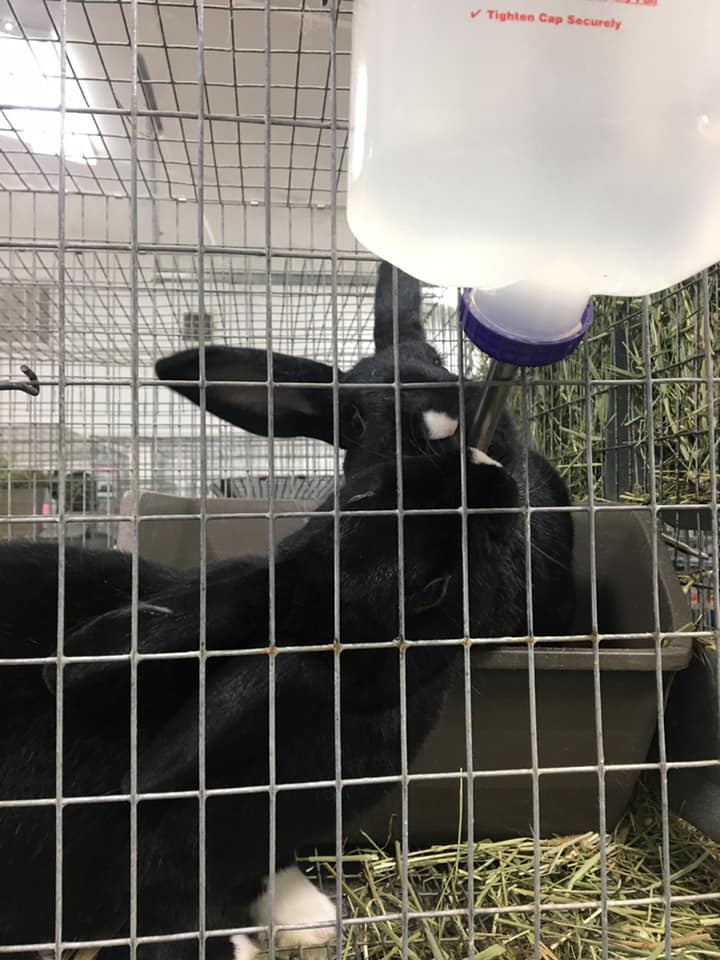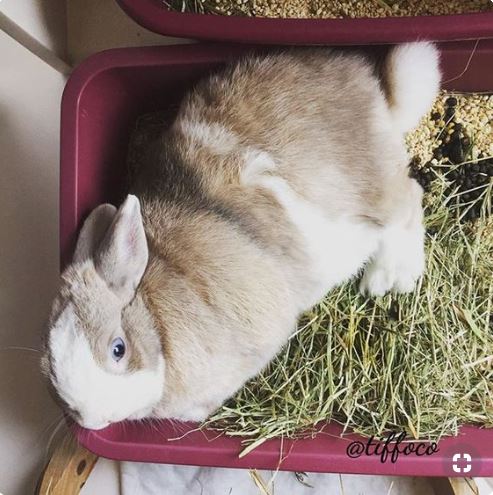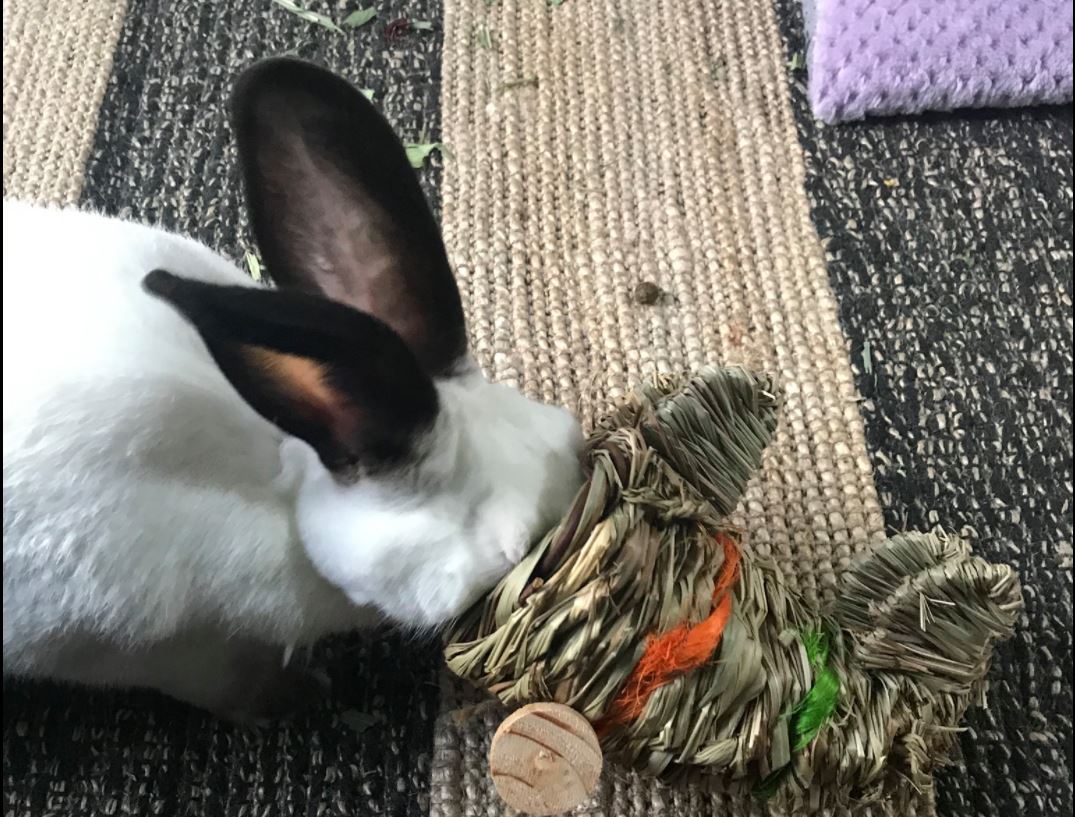Rabbit Habitat Types and Ideas
There are lots of beautiful and unique ways to create the perfect living space for your rabbit in your home. A rabbit living space in the home should be safe, secure, and provide your rabbit with enough space to run around. On this page, we discuss the different types of “habits” or living spaces you can provide your rabbit in your home. We’ve also included examples so you can get some ideas of what you may want to have set up for your rabbit.
Not sure why your rabbit needs to live inside your home? Check out: Why Outside is No Place for a Rabbit
Rabbit Living Space in the Home
Rabbit Habitat Types
Rabbit habitat types can be most easily divided into two types. Both consist of a “home-base”, or cage where the rabbit can run and hide if at any point they feel the need. In any rabbit living space set up, a home-base is a must.
With that in mind, from there the habitat types are separated into cage and x-pen set up, and cage and free-roam set up.
Rabbit Habitat Types
Cage with Free-Roam
One option for living with a house rabbit is to have your rabbit free-roam an area of the home, or the entire home.
A cage and free-roam setup is great for those rabbits who are not known to be super-destructive of household property. If your rabbit has a taste for baseboards or carpet, free-roam may not be the best living space set up for them. While bunny-proofing is always recommended, it’s much easier to have a free-roam rabbit who’s shown less interest in these things.
Will Rabbit Be Free-Roam All the Time?
If you decide you want to try your bunny with cage and free-roam living, there are two ways you can set it up. Either bunny will be free-roam all the time, or only free-roam when you are home to supervise. Both versions can work and it all depends on the individual rabbit.
How to Introduce Free-Roam Living to Rabbit:
Always start small, and expand over time.
When you first bring bunny home, do not immediately start with a free-roam setup. For most rabbits, this is way too overwhelming. Moving to a new home is stressful. Rabbits are no different with this. It’s extremely important you take your time in letting bunny get adjusted to their new home. Rabbits can suffer health problems like gut stasis due to the stress of being in a new home and not feeling safe and secure.
So no matter what rabbit living space setup you have in mind for the future, start small in the beginning. A cage and x-pen setup is where to start. Build bunny’s confidence. Then, over the course of several weeks, make the space they can roam larger. You’ll see the confidence change in your rabbit and know when they’re ready for expansion.
Always keep the cage even when they’re completely free-roam. The cage is their safe place, where they can run and hide if ever they feel the need. This is normally where people put the litter box, water, and feed the rabbit.
Things to Be Aware of with a Free-Roam Rabbit:
If young children (6 and below) are in the home, a free-roam rabbit is most likely not a good idea until the children are older.
Many rabbits who have the personality for free-roam do well with other species of pets such as cats or dogs.
The success of different animals living in the home together depends on the individual animals involved. It is the caretaker’s responsibility to thoroughly and honestly review each animal’s personality. Then decide whether a rabbit should live free-roam with the other animals in the home.
Cats and rabbits are the most likely to do well free-roam living together. Cats and rabbits usually bond easily, or just ignore each other completely. If you have a cat, keeping their nails trimmed (do NOT declaw!) can be an extra safety precaution, but rarely needed.
Dogs and rabbits have a bit rougher time living together, but with the right dog and rabbit, it can still work out.
With that said, with the wrong dog and rabbit, the outcome can be disastrous. So be aware, and be honest with yourself. If it doesn’t look like it’s working out, don’t push it. If you do, the results can be deadly.
For dogs and rabbits to coexist free-roam together, almost all of that success rests on the dog. The dog needs to have a certain personality, as well as a good training foundation. These two things are a must.
If you do have other animals in the home, we recommend your rabbit only have free-roam living while you are there to supervise. When you are out or asleep, the rabbit should be in a safe place protected from the dog or cat.
Learn more in our Rabbits & Other Animals page. This page goes more in-depth into introducing rabbits to other animals as well as discusses how to tell if your dog is a good candidate to live with a rabbit.
HRRN Alumni Henry and Buns are a great example of a cage and free-roam setup. Their adopter said that while she is home, Henry and Buns are free-roam. But when she leaves the house or is asleep, they are put in their cage. She is home quite often so they mostly only go in their cage for night time.
HRRN Alumni Eleanor and Rigby live free range with two cats. Other animals in the home plays a big part in whether your rabbits should be free-roam or not. Cats and rabbits do much better with free-roam situations than dogs and rabbits. However, certain dogs and rabbit combos have had success with free-roam. As always, it depends on the individual family as a whole.
HRRN alumni’s Pasadena and Oliver with their dog Honey.
Rabbit Habitat Types
Cage with X-Pen
The term “x-pen” is just short for “exercise pen”, specifically the types that are sold for dogs. There are varying sizes of x-pens based on dog size. Choose the one that works best for your space.
A cage and x-pen living space is a great option for all rabbits. It gives your rabbit enough space to run and play, while also keeping them in a safe and controlled setting.
Cage and X-pen living is strongly recommended for those households with young children.
Even with cage and x-pen living, many people let their rabbits out of that space to play a few hours a day under supervision.
The cage and x-pen setup gives your rabbit a healthy 24/7 living space no matter if you’re able to give them additional playtime outside of that space.
X-pens are only barriers to keep your rabbit in a space, they will not protect your rabbit from a force such as a dog trying to get into the cage.
What's the Material for an X-pen?
When it comes to x-pen materials, you want metal. There are wood versions but they’re chemically treated. You don’t want bunny chewing on that. Another point when choosing an x-pen for bunny is to make sure the space between the bars is small enough. Bars need to be close enough that even the sneakiest rabbit can’t slip through the bars when you aren’t looking.
Because they’re meant for dogs, most x-pens are 3 feet tall or a little taller. Most rabbits won’t try and jump over that height, but some will. If your bunny has shown to be a jumper, consider getting the tallest versions available.
Where in the House for Cage and X-pen living?
Cage and X-pen living space can be in any place in the house you deem safe from other animals and people. Some people choose to simply give their rabbits an entire room to themselves. No matter which version you choose, always include the cage or “home-base” where your rabbit can go hide at any time they feel the need.
In any of these living spaces, the cage normally holds the litterbox and food for bunny.
The Benefits of Cage and X-pen:
The benefits of cage and x-pen living over free-roam is that you’re able to keep a specific area safely bunny-proofed at all times. With a cage and x-pen, everyone always knows where bunny is. This keeps the risks of horrible accidents to a minimum.
Please note: if you have a dog who does not like bunnies, you’ll need to keep the rabbit in a separate room because x-pens will not keep a dog from attacking a rabbit.
Where to Purchase X-Pens?
Amazon.com, Chewy.com, and retail stores like Walmart or Petsmart all carry exercise pens. Online stores may have a wider variety of sizes.
The above photo was sent in by one of our adopters and is a great example of a cage and x-pen living space. As you can see, the cage holds the litter box, water, and food. They’ve also included a litter box outside in the xpen with a hayrack above it. Toys and entertainment are available in the x-pen space.
HRRN alumni Paige is an x-pen living bunny when her folks aren’t home or are asleep. When they’re supervising, she’s free-roam. So her “cage” or “home-base” is her x-pen area. Paige is a social, confident bunny so this large home-base area works for her. This would possibly be too overwhelming for a shyer bunny, but also simply adding a hidey-hole like a cardboard house could give them that extra safe place they may need or want.
Cardboards boxes make great “safe-zones” for those bunnies whose “cage” is the entire x-pen.
MidWest Homes is a popular dog kennel and exercise pen company that can be found on Amazon.com
Rabbit Living Space in the Home
What Every Rabbit Living Space Needs
No matter what your rabbit’s living space type is, there are a few things that your rabbit needs.
A Soft Place to Lay:
A soft place for your rabbit to lay down is especially important if their cage has a wire bottom. Rabbit’s feet are sensitive and they need a place available 24/7 to relax and give their feet some rest. Even if your rabbit doesn’t have a wire floor, they will appreciate a soft, padded place to stretch out and relax.
What makes a good lay-down surface?
You want something that is not enticing to chew or dig. You want to avoid rugs or towels with long fibers that are easy to shred and possibly ingest. Many rabbits will eat holes in towels or rugs, which can lead to intestinal blockages.
Some options for lay down surfaces:
- Memory foam bath mats: the fibers are extremely short and tight. Most rabbits are unsatisfied chewing these types of mats and will use them for their intended purpose to lay down.
- EZ floor cage mats: made of plastic, these mats lock on over the wire cage floor and offer your rabbit some relief. Required if your rabbit spends any amount of time in only a cage with wire flooring.
- Ikea Doll Beds: Lots of our adopters swear by these. The Ikea Dolls beds look adorable in any habitat, and are a soft place for bunny to lay. These beds may not be the best for those rabbits who are big chewers.
- Grass Mats: Grass mats are great for those rabbits who love to dig and chew. Grass mats are totally edible and give many bunnies the entertainment they crave. However, these will go pretty fast, so we recommend stocking up, and also having a non-edible soft place to lay. Having both options in the cage can help bunny get their chewing urges out on the grass mat, leaving the normal fabric rug to only rest on.
- Any short-fiber rug or mat.
Photo of the EZ floor cage mats that go over wire mesh flooring in your rabbit’s cage. These are a must for rabbits who spend any time in a cage with a wire floor. They’re easy to clean and place back in position, and bunny poop falls right through.
Photo of an Ikea Doll Bed that can be a great place for bunny to lay.
Photo of a grass mat being used as intended.
Water Available 24/7
While this may seem obvious, many people don’t realize just how important it is for water to be available in your rabbit’s living space all the time.
Rabbits drink a lot of water per day. It’s essential you check your rabbit’s water every day to make sure it’s full, and clean (no algae).
There are water bottles and water crocks available depending on which your rabbit prefers. Some rabbits prefer having both a water bottle and a crock. When you buy a water bottle, get the largest sizes available. Many retailers sell really small size water bottles for rabbit cages that do not hold enough water for a rabbit.
If you notice your rabbit is not drinking water, it is an emergency and you need to get them to the vet asap.
Litter Box
While there is an entire page dedicated to this subject, it can simply be mentioned that a rabbit’s living space should have at least one litter box.
Even if you have a wire-bottom cage, most rabbits prefer to have a specific area to use the bathroom. It can also help you keep the area clean.
Most people keep one litter box in the actual cage area, and one litter box in the x-pen area so that bunny has access to one no matter where they are.
Enrichment Toys
Having several toys in your rabbit’s living space can cut down on destructive chewing and digging. It may take some time to find the perfect toy that your rabbit loves, but there are lots of options to try!
Did you know that rabbits teeth are always growing? Chewing on things helps them keep their teeth trimmed and healthy. That’s why it’s extremely important to provide your rabbit with plenty of timothy hay and appropriate toys to chew on. Chewing is a normal, natural, necessary (and highly enjoyable) activity for rabbits. Giving your rabbit access to lots of chewable toys and items helps keep them healthy and active.
Here are some companies that HRRN feels sell safe and healthy toys for your rabbit. Not all toys sold at pet stores like Petco and Petsmart are safe or healthy for your rabbit.
Habitat Enrichment
It’s a common misconception that rabbits are boring, unsocial animals that are content just sitting in a small cage 24/7. Rabbits LOVE to run, jump, do zoomies, gnaw, dig, throw toys around, and lay out after a good romp. Check out some of these bunny-approved and safe cage enrichment recommendations.
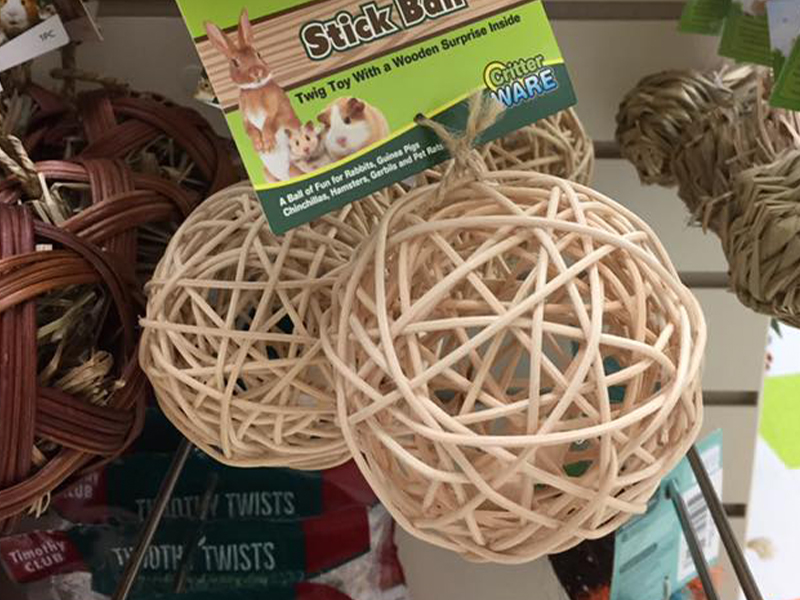
Chewable Items
Did you know that rabbits’ teeth are always growing?
Chewing on things helps them keep their teeth trimmed and healthy. That’s why it’s extremely important to provide your rabbit with plenty of timothy hay and appropriate toys to chew on. Chewing is a normal, natural, necessary (and highly enjoyable) activity for rabbits. Giving your rabbit access to lots of chewable toys and items in their home will help keep them healthy and active, as well as keep your carpet, furniture, and electrical cords safe from their little gnawing teeth.
Every rabbit likes different things. One rabbit may love to chew on fruit tree sticks, while another doesn’t find them appealing at all. If your rabbit turns their nose up to one type of toy, don’t fret! there’s a variety of options out there to fit almost every bun! But, many pet stores sell unsafe/unhealthy chewable toys for rabbits. Things with sweet, birdseed, etc. are no-nos for your bunny. Look further down this page for a list of rabbit toy no-nos.
Check Out Our Bunny Boutique
House Rabbit Resource Network has a Bunny Boutique Store attached to our shelter. We sell a variety of toys, hay, litter, pellets, custom built rabbit cages, medical emergency kits, and so much more! Check out our SHOP page for store hours. Below are some of HRRN’s approved rabbit toys that we personally sell in our store.
